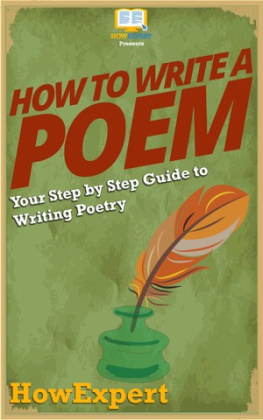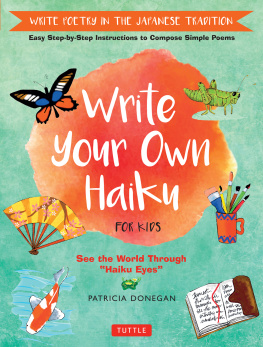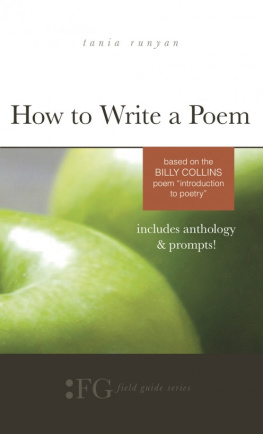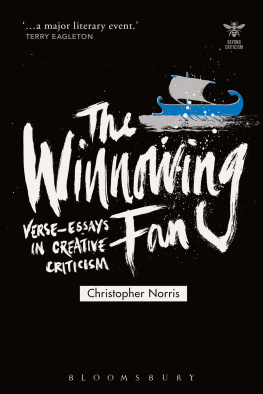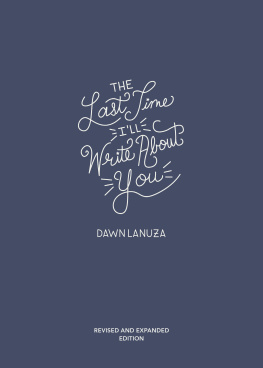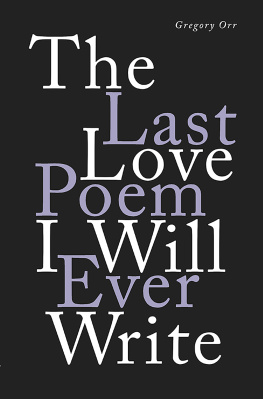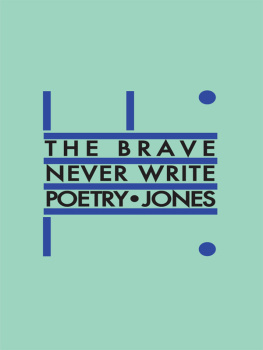GLOSSARY

All terms appearing in bold type in the text and index of this book are defined in this glossary.
abstract term: a word representing an idea or quality that is conceptual rather than tactile; pride, honor, love and beauty are abstract terms. Contrast with .
alliteration: the repetition of identical consonant sounds: "She scarce could see the sun" (from "The Blessed Damozel" by Dante Gabriel Rossetti).
anapest: a metrical consisting of three syllablestwo unstressed syllables followed by a stressed syllable (ta-ta-DUM).
apocopated rhyme: a type of in which true rhyme sounds fall on a stressed and then an unstressed syllable: bow (BOW) and fallow (FALlow).
assonance: the repetition of identical vowel sounds: "But, as he walked, King Arthur panted hard" (from "Idylls of the King" by Alfred, Lord Tennyson).
ballad: a poetic (second and fourth lines). The second and fourth lines rhyme. The ballad is primarily a narrative form.
blank verse: unrhymed .
cacophony: a combination of harsh sounds that grate on the ear. Contrast with .
cinquain: a five-line .
concrete term: a word describing a quality that appeals to one or more of the senses: cold, hot, soft, hard, bland and spicy are concrete adjectives; book, table and car are concrete nouns. Contrast with .
connotation: the emotional and intellectual suggestions a word carries in addition to its .
consonance: the repetition of similar consonant sounds in words with dissimilar vowel sounds: beard and board.
couplet: a of two lines. Originally, couplets were rhymed and their grammatical structure and idea complete within the two lines.
dactyl: a metrical consisting of three syllablesa stressed syllable followed by two unstressed syllables (DUM-ta-ta).
denotation: the dictionary definition of a word. Also see .
dimeter: a line of poetry consisting of two feet. See .
dramatic monologue: a poem in which the speaker, often a , relates a dramatic moment in his or her life. The dramatic monologue is primarily narrative.
end rhyme: rhyme occurring at the end of two or more lines.
end-stopped line: a line of poetry in which both the grammatical structure and the sense are complete. "Come live with me and be my love" (from "The Passionate Shepherd to His Love" by Christopher Marlowe) is an end-stopped line, complete in both its grammatical structure and sense. Contrast with .
enjambed line: a line of poetry in which the grammatical structure and the sense are not complete but continued in the following line. "Heard melodies are sweet, but those unheard" is an enjambed line; the following line is "Are sweeter; therefore, ye soft pipes, play on" (from "Ode on a Grecian Urn" by John Keats). Contrast with .
euphony: a combination of sounds that please the ear. Contrast with .
extended metaphor: a sequence of metaphors, based on a single association, that runs throughout a poem. Such a metaphor is highly developed and consistent in its application of associations.
feminine rhyme: rhyme occurring in words of two or more syllables in which the concluding syllables are unstressed: reason (REASon) and season (SEASon). Also see .
figure of speech: a type of rhetoric used to achieve special effects. See .
foot: a unit of .
form: a pattern of .
free verse: non-metrical poetry. Rather than using meter, free verse makes use of natural cadences for its rhythm. Meter may be used in free verse, but the rhythms of free verse are not predominantly metrical.
general term: a word signifying a broad class of persons, things or actions. Contrast with .
hexameter: a line of poetry consisting of six feet. See .
iamb: a metrical foot consisting of two syllablesan unstressed syllable followed by a stressed syllable (ta-DUM). The iamb is the most common metrical foot in English poetry.
imagery: a word or phrase that presents sensory detail for the reader to experience. Images appeal to one or more of the five senses: sight, smell, touch, hearing and taste.
internal rhyme: occurring in the middle of one or more lines.
line break: the end of a line of poetry. See .
masculine rhyme: rhyme occurring in single-syllable words, as in can and pan, or in the stressed, concluding syllables of words, as in align (aLIGN) and refine (reFINE). Also see .
metaphor: a that implicitly equates one thing with another, with the first thing assuming the characteristics of the second. "Sometime too hot the eye of heaven shines" (from Sonnet 18 by William Shakespeare) contains a metaphor equating the sun with "the eye of heaven."
meter: the recurrence of a rhythmic pattern in which stressed and unstressed syllables are repeated. The basic rhythmic unit is the foot. The common feet are the (six feet).
metonymy: a figure of speech in which the name of one thing is substituted for that of another. Metonymy occurs when "the White House" is used to refer to the President and "the crown" to refer to a king or queen.
mixed metaphor: a in which the elements are incongruous, as in "He boiled with joy and she bubbled with anger." The incongruity here is that the verbs and their respective emotions don't coincide: Metaphorically, joy bubbles and anger boils.
octave: the first eight lines of an Italian sonnet. The octave develops the situation of the poem, which is then resolved in the sestet.
onomatopoeia: the use of words that imitate sounds and suggest their meaning, such as buzz, crack, hiss, murmur, sizzle, snap and whirr.
overstatement: a .
paradox: a figure of speech in which a statement seems contradictory, but is nonetheless true. When Juliet, in Shakespeare's play Romeo and Juliet, bids goodnight to Romeo by saying, "Parting is such sweet sorrow," she employs paradox. Their parting is sorrowful, but it's also sweet because they look forward to their next meeting.
pentameter: a line of poetry consisting of five feet. See .
persona: the term persona, from the Latin, means "mask." A persona is a character created to speak a first-person poem; it is an I who can be distinguished from the author. Also see .
pyrrhic: a metrical consisting of two syllables, both unstressed (ta-ta).
quatrain: a , the most common of which are abab, aabb and abba.
repetition: a rhetorical device that repeats a word or phrase or reiterates an idea.
rhyme: the .
rhyme scheme: a consistent pattern of , which rhymes ababcdcdefefgg.
septet: a of seven lines.
sestet: the final six lines of an Italian .
simile: a that explicitly compares one thing to another through the words like or as. "O my Luve's like a red, red rose" (from "A Red, Red Rose" by Robert Burns) is a simile comparing the speaker's "Luve" to a rose.
slant rhyme: an imperfect . Examples of slant rhyme are love and give (slant rhyme using alliteration), lake and fate (slant rhyme using assonance) and speak and spook (slant rhyme using consonance).
sonnet: a poetic form consisting of fourteen . The Italian sonnet rhymes abbaabbacdecde (or cdccdc, cdcdcd). The English sonnet rhymes ababcdcdefefgg. The Spenserian sonnet rhymes ababbcbccdcdee.


